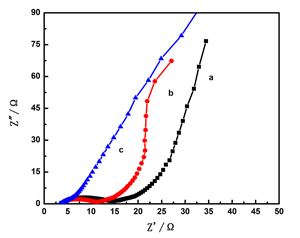

聚乙烯醇基水凝胶聚合物电解质超级电容器的研究
收稿日期: 2010-12-04
修回日期: 2011-01-10
网络出版日期: 2011-05-06
基金资助
国家863项目:2009AA03Z217,国家自然科学基金重大研究计划:90922028
Investigation of Supercapacitors Based on Polyvinyl Alcohol Hydrogel-Polymer Electrolyte
Received date: 2010-12-04
Revised date: 2011-01-10
Online published: 2011-05-06

关键词: 2-丙烯酰胺基-2-甲基丙磺酸(AMPS); 聚乙烯醇(PVA); 水凝胶聚合物电解质; 超级电容器
许开卿 , 范乐庆 , 吴季怀 , 冷晴 , 钟欣 , 林建明 , 黄妙良 , 兰章 . 聚乙烯醇基水凝胶聚合物电解质超级电容器的研究[J]. 电化学, 2011 , 17(2) : 190 -194 . DOI: 10.61558/2993-074X.2088

/
| 〈 |
|
〉 |